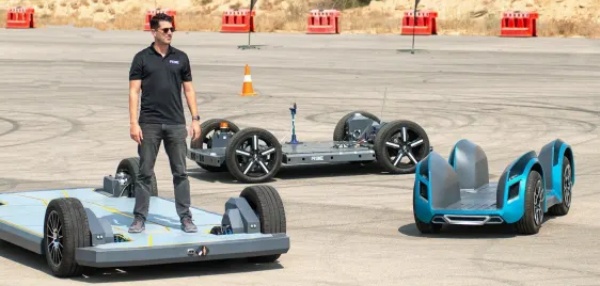Car design will improve forever
But only if it has those two features.
Fast Company has published a really enthusiastic piece on how electric vehicles (EVs) could change car design forever.
I agree with the “change forever” part, and think that the one described in that article is the right way in which the design of “cars” should change, and the sooner it does the better. There are just a couple of conditions and reality checks to add to that vision, if it has to be sustainable, while making the world a better place.
The real huge advantages of electric vehicles:
EVs have at least two undeniable advantages over internal combustion cars:
- they are quiet. Dangerously quiet, in some circumstances
- they are much more durable, that is much less expensive to maintain
Note that I did not say “clean, renewable energy”
Of course, electric vehicles are only “green” as the ways to produce all their components and their electricity. At this level, the real advantage that EVs have over internal combustion engines is the possibility to improve.
Unless some real miracles happen in chemistry really soon, cars using gas will produce always the same pollution, and geopolitical instability, every kilometer of their life. An EV, instead, could switch from electricity by coal to electricity by nuclear or solar sources without even noticing it. But there is more.
The main advantages of electric vehicles are simplicity. And modularity
Traditional gas cars are monolithic obiects, with thousands of mostly custom parts, assembled in a way that cannot meaningfully change once each car is out of the factory. Not without spending more than the car originally costed, that is.
EVs totally change this picture, making people say that there should be “an electric motor in EVERY vehicle”. This picture (see the change car design forever) nicely summarizes why:

Is it possible to make a fossil fuel powered car chassis, flat and modular like those ones, and capable like them to actually move around as if it where a complete car?
No, because native EVs need many, many less parts to function, and tiny motors right inside each wheel. This is why the developers of those platform say that “the car of the future is a skateboard, and whatever YOU want goes on top”.
If full motors are inside the wheels, each EV can be reduced to the sum of two, very interchangeable parts: the “skateboard” shown in the pictures, and any box, for any purpose, placed on top of it.
Skateboards like those may host small city buses, as well as professional offices and shops, from dentists to plumbers or street food. Individuals may buy and customize only a passenger module. Everybody could leave the chassis below their “vehicle” at some shop for scheduled maintenance, or replace it with a new one, in as little time as it could take to change tires.
Basically, electric chassis would play the same role that today’s USB chargers have with smartpones: you can borrow or buy another one without losing “service” from your phone for one minute.
Don’t forget these two features!
Full modularity as in that video is the way to go for electric vehicles. As good as it is, however, it will not materialize in the right way if two more, non-technical conditions are met:
- It must not promote personal car ownership, or rely on it, as much as the car makers of today. Not even close. The percentage of humans living in cities is increasing, and cities cannot be decent places if everybody has his personal car. Is there still any doubt on that?
- It has to be 100% made with fully interoperable parts. We cannot continue to afford the same waste of materials and energy that has gone on for decades
Add these two requirements to the already mentioned reality that EVs inherently last much longer than traditional vehicles, and you get the one requirement that any long-term business plan for EV makers cannot avoid: it has to be profitable even with production volumes much lower than today.
Who writes this, why, and how to help
I am Marco Fioretti, tech writer and aspiring polymath doing human-digital research and popularization.
I do it because YOUR civil rights and the quality of YOUR life depend every year more on how software is used AROUND you.
To this end, I have already shared more than a million words on this blog, without any paywall or user tracking, and am sharing the next million through a newsletter, also without any paywall.
The more direct support I get, the more I can continue to inform for free parents, teachers, decision makers, and everybody else who should know more stuff like this. You can support me with paid subscriptions to my newsletter, donations via PayPal (mfioretti@nexaima.net) or LiberaPay, or in any of the other ways listed here.THANKS for your support!